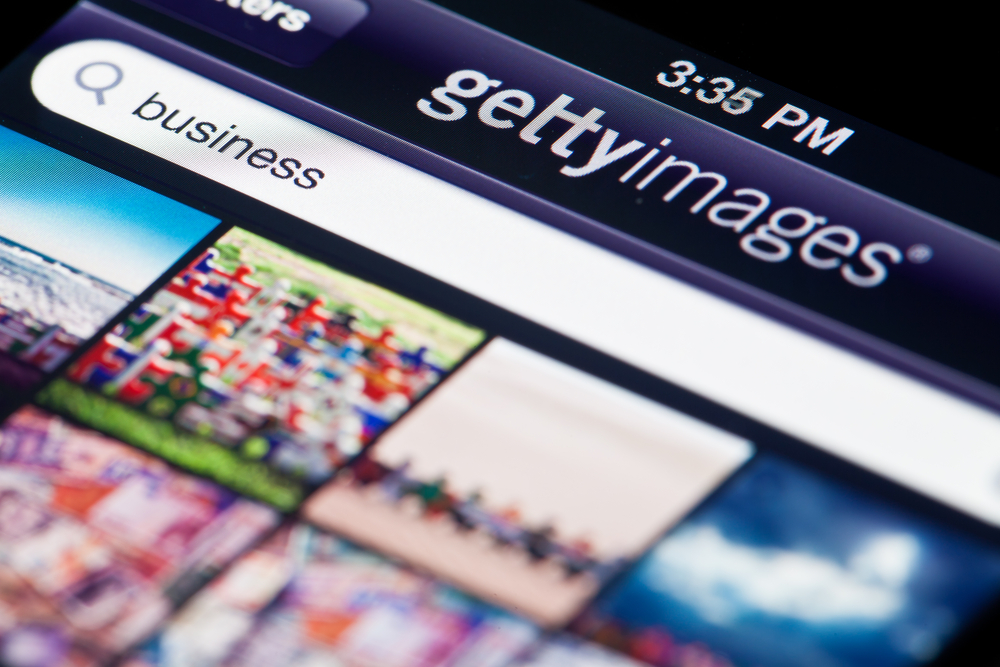Getty Images is synonymous with high-quality photography, offering a vast library of images for various purposes, from commercial to personal use. But have you ever wondered how they determine the price of these images? It's not just a random number; there’s a complex system behind it. In this post, we’ll dive into the intricacies of Getty Images' pricing strategy, helping you understand the factors that come into play when you decide to purchase an image. Let’s explore the world of image pricing!
Factors Influencing Image Pricing

When it comes to pricing images, Getty Images considers a variety of factors to ensure fairness and consistency in their rates. Here are some of the key elements that influence how much you’ll pay for an image:
- Usage Rights: The price often varies based on how you intend to use the image. For instance, a commercial advertisement will cost more than an image used for personal blogging. Different licenses, like royalty-free or rights-managed, also play a significant role in pricing.
- Image Quality and Resolution: Higher resolution images, suitable for large prints or high-quality publications, typically come with a heftier price tag. Getty Images categorizes images into various tiers based on their quality, which directly affects cost.
- Exclusivity: If you're looking for exclusive rights to an image, expect to pay a premium. Exclusive licenses mean that only you can use that particular image, which can be a valuable asset for businesses wanting to stand out.
- Popularity and Demand: Just like any other market, supply and demand influence image pricing. Trendy or highly sought-after images may be priced higher due to their popularity.
- Photographer Reputation: Images from well-known photographers or those with a significant following can command higher prices. Their established credibility often translates to perceived value.
Understanding these factors can equip you with the knowledge needed to make informed decisions when purchasing images from Getty. It’s not just about the cost; it's about the value and rights associated with the imagery you choose!
Also Read This: How to Get Photos from Getty Images Without Watermark
Types of Licenses and Their Costs
When it comes to purchasing images from Getty Images, understanding the various types of licenses available is crucial. Each license caters to different needs and comes with its own pricing structure. Here’s a breakdown of the main types:
- Royalty-Free License: This is one of the most popular options. Once you purchase an image under this license, you can use it multiple times without paying additional fees. Prices typically range from $15 to $500, depending on the image's size and resolution.
- Rights-Managed License: This license is tailored for more specific uses. The cost is calculated based on factors like the image's intended use, distribution, and duration. Prices can vary significantly, often between $100 and $3,000.
- Editorial License: If you're looking to use images for news articles or blogs, this license is ideal. It usually costs less than commercial licenses, with prices around $50 to $500.
- Extended License: This license allows for broader usage, such as merchandise or print. Prices can start from $500 and go up, depending on the usage rights granted.
Ultimately, the type of license you choose impacts not just the cost but also how you can use the images legally. Always read the terms carefully to ensure your use aligns with the license purchased!
Also Read This: How to Save an Image from Getty Images with Legal Downloads
Market Trends and Their Impact on Pricing
The pricing of images on Getty Images is not static; it’s influenced by various market trends that shift over time. Let’s explore some of these trends:
- Demand for Authenticity: As consumers gravitate towards genuine imagery that reflects real-life moments, there's an uptick in demand for less staged, more relatable photos. This trend often drives prices higher, as unique, authentic images become sought after.
- Rise of Visual Content: With social media and digital marketing on the rise, businesses are investing more in high-quality visuals. This increase in demand can lead to higher prices, particularly for trending themes or popular categories.
- Technology and AI: The advent of AI-generated images has created both competition and opportunity. While some traditional images may see a dip in cost due to the abundance of AI options, unique, high-quality images still command premium pricing.
- Economic Factors: Inflation and economic shifts can impact budgets for marketing and advertising. In tighter economic times, companies may opt for more budget-friendly license types, influencing Getty Images’ pricing strategy.
Staying updated on these trends is essential for anyone looking to purchase images, as they can significantly affect not just availability, but also pricing. Adapting to these changes can help you make more informed purchasing decisions!
Also Read This: How to Sell Photos Through Getty Images and Start Earning Income
5. Comparative Analysis with Other Stock Image Providers
When it comes to stock photography, Getty Images stands out, but how does its pricing structure compare to other major players in the industry? Let’s dive into a comparative analysis with some of the leading stock image providers like Shutterstock, Adobe Stock, and iStock.
Shutterstock: Known for its subscription model, Shutterstock offers plans that allow users to download a set number of images per month. Their prices can range from $29 per month for 10 images to $199 for 750 images. This model is often more cost-effective for users needing regular access to images. In contrast, Getty Images typically charges per image, making it ideal for one-off purchases.
Adobe Stock: Adobe integrates its stock service with Creative Cloud, allowing seamless access for its users. Prices start around $29.99 for 10 images, similar to Shutterstock, but Adobe also offers a credit system. This flexibility can appeal to creatives who prefer to pay as they go, unlike Getty’s more fixed pricing.
iStock: A subsidiary of Getty Images, iStock operates on a different pricing model, offering images at lower prices through a credit system or subscription plans. For instance, users can purchase image credits starting from $12 for 3 credits, making it accessible for smaller budgets while still providing quality imagery.
In summary, while Getty Images is known for its premium, high-quality images, its pricing can be seen as higher compared to providers like Shutterstock and Adobe Stock. Users must weigh the value of unique, high-quality content against their budget and needs.
6. Conclusion on Getty Images Pricing Strategy
Getty Images has carved out a unique niche in the stock photography market with its distinctive pricing strategy. By focusing on high-quality, exclusive content, Getty differentiates itself from competitors. This approach might come with a heftier price tag, but it appeals to professionals seeking standout visuals that aren't widely used.
The pricing strategy is twofold: it caters to both one-time buyers and subscription models through Getty Images and its iStock platform. While the premium pricing might deter casual users, it attracts serious content creators, marketers, and brands that understand the value of unique imagery.
Here are a few key takeaways:
- Quality over Quantity: Getty's images are often regarded as more prestigious, justifying their higher price point.
- Exclusive Access: Many images are licensed exclusively, meaning clients can use them without worrying about oversaturation in the market.
- Flexible Offerings: With options like iStock, Getty caters to a broader audience, making their services more accessible to various budgets.
In conclusion, Getty Images’ pricing strategy is designed to position itself as a leader in high-end stock photography, balancing exclusivity with quality. For those who value exceptional content, the investment is often worthwhile.
 admin
admin








